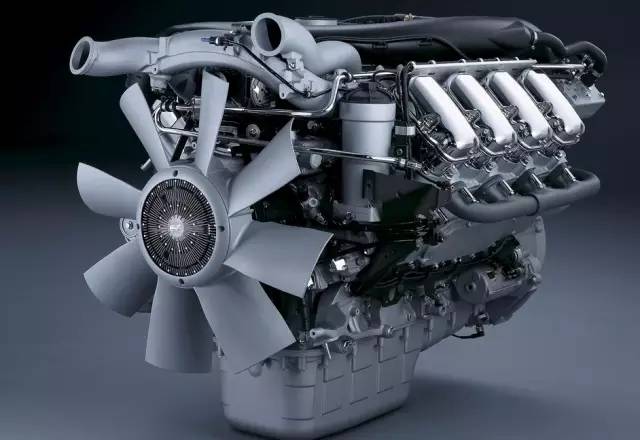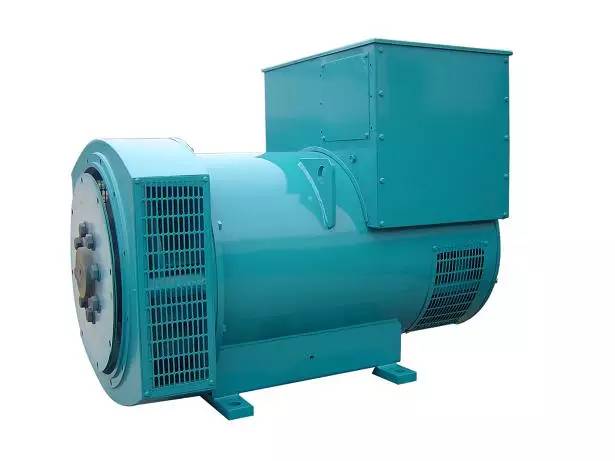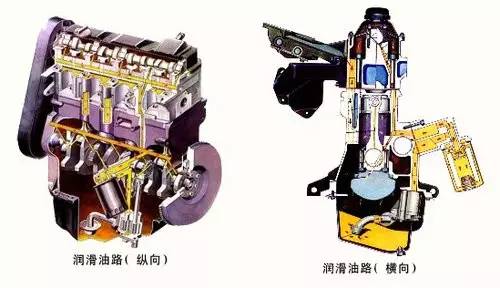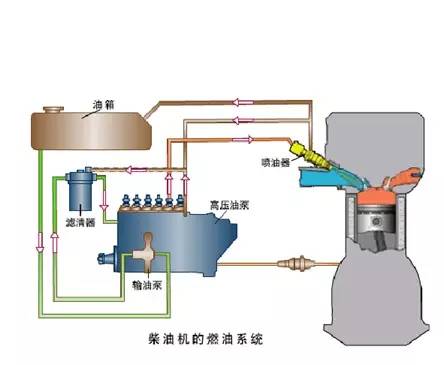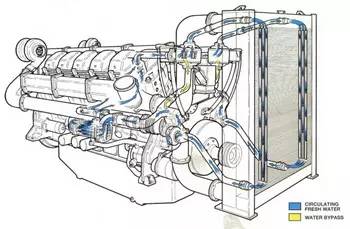Diesel generator sets are mainly composed of two parts: engine and alternator
Engine Diesel engine is an engine that burns diesel oil to obtain energy release. The advantages of diesel engine are high power and good economic performance. The working process of a diesel engine is similar to that of a gasoline engine. Each working cycle goes through four strokes: intake, compression, work, and exhaust. But because the fuel used in diesel engines is diesel, its viscosity is higher than gasoline, and it is not easy to evaporate, and its spontaneous combustion temperature is lower than gasoline. Therefore, the formation and ignition of combustible mixture are different from gasoline engines. The main difference is that the mixture in the cylinder of a diesel engine is compression-ignited instead of being ignited. When a diesel engine is working, air enters the cylinder. When the air in the cylinder is compressed to the end, the temperature can reach 500-700 degrees Celsius, and the pressure can reach 40-50 atmospheres. When the piston is close to top dead center, the high-pressure pump on the engine injects diesel into the cylinder at high pressure. The diesel forms fine oil particles, which are mixed with high-pressure and high-temperature air. At this time, the temperature can reach 1900-2000 degrees Celsius, and the pressure can reach 60-100 atmospheres, which produces a lot of power.
The generator diesel engine does work, and the thrust acting on the piston is transformed into the force that drives the crankshaft to rotate through the connecting rod, thereby driving the crankshaft to rotate. The diesel engine drives the generator to operate, converting the energy of the diesel into electrical energy.
The alternator is installed coaxially with the crankshaft of the diesel engine, and the rotor of the generator can be driven by the rotation of the diesel engine. Using the principle of ‘electromagnetic induction’, the generator will output induced electromotive force, which can generate current through the closed load circuit. two. Six diesel engine systems: 1. Lubrication system; 2. Fuel system; 3. Cooling system; 4. Intake and exhaust system; 5. Control system; 6. Start system.
[1] Lubrication system anti-friction (high-speed rotation of the crankshaft, once lack of lubrication, the shaft will be melted immediately, and the piston and piston ring will reciprocate at high speed in the cylinder. The linear velocity is as high as 17-23m/s, which is easy to cause heat and pull the cylinder. ) Reduce power consumption and reduce wear and tear of mechanical parts. It also has the functions of cooling, cleaning, sealing, and anti-oxidation and corrosion.
Lubrication system maintenance? Check the oil level every week to maintain the correct oil level; after starting the engine, check whether the oil pressure is normal. ? Check the oil level every year to maintain the correct oil level; check whether the oil pressure is normal after starting the engine; take a sample of the oil and replace the oil and oil filter. ? Check the oil level every day. ? Take oil samples every 250 hours, and then replace the oil filter and oil. ? Clean the crankcase breather every 250 hours. ? Check the engine oil level in the crankcase and keep the oil level between the “plus” and “full” marks on the “engine stop” side of the oil dipstick. ? Check the following parts for leaks: crankshaft seal, crankcase, oil filter, oil passage plug, sensor and valve cover.
[2] The fuel system completes the storage, filtration and delivery of fuel. Fuel supply device: diesel tank, fuel pump, diesel filter, fuel injector, etc.
Fuel system maintenance Check whether the joints of the fuel line are loose or leaking. Make sure to supply fuel to the engine. Fill the fuel tank with fuel every two weeks; check whether the fuel pressure is normal after starting the engine. Check whether the fuel pressure is normal after starting the engine; fill the fuel tank with fuel after the engine stops running. Drain water and sediment from the fuel tank every 250 hours Replace the diesel fine filter every 250 hours
[3] Cooling system The diesel generator generates high temperature due to the combustion of diesel and the friction of moving parts during operation. In order to ensure that the heated parts of the diesel engine and the supercharger shell are not affected by high temperature, and to ensure the lubrication of each working surface, It must be cooled in the heated part. When the diesel generator is poorly cooled and the temperature of the parts is too high, it will cause some failures. The parts of the diesel generator should not be overcooled, and the temperature of the parts is too low to cause adverse consequences.
Cooling system maintenance? Check the coolant level every day, add coolant when needed? Check the concentration of rust inhibitor in the coolant every 250 hours, add rust inhibitor when needed? Clean the entire cooling system every 3000 hours and replace with new coolant ? Check the coolant level weekly to maintain the correct coolant level. ? Check whether there is pipeline leakage every year, check the concentration of anti-rust agent in the coolant, and add anti-rust agent when necessary. ? Drain the coolant every three years, clean and flush the cooling system; replace the temperature regulator; replace the rubber hose; refill the cooling system with coolant.
[4] Intake and exhaust system The intake and exhaust system of a diesel engine includes intake and exhaust pipes, air filters, cylinder heads, and intake and exhaust passages in the cylinder block. Maintenance of intake and exhaust system Check the air filter indicator weekly, and replace the air filter when the red indicator section appears. Replace the air filter every year; check/adjust the valve clearance. Check the air filter indicator every day. Clean/replace the air filter every 250 hours. When the new generator set is used for 250 hours for the first time, it is required to check/adjust the valve clearance
[5] Control system fuel injection control, Idle speed control, intake control, boost control, emission control, start control
Fault self-diagnosis and failure protection, Integrated control of diesel engine and automatic transmission, Fuel injection control: Fuel injection control mainly includes: fuel supply (injection) control, fuel supply (injection) timing control, fuel supply (injection) rate control and fuel injection pressure control, etc.
Idle speed control: The idle speed control of diesel engine mainly includes the control of idling speed and the uniformity of each cylinder during idling.
Intake control: The intake control of diesel engine mainly includes intake throttle control, variable intake swirl control and variable valve timing control.
Supercharging control: The supercharging control of the diesel engine is mainly controlled by the ECU according to the diesel engine speed signal, load signal, boost pressure signal, etc., by controlling the opening of the wastegate valve or the injection angle of the exhaust gas injector, and the turbocharger turbine exhaust gas inlet Measures such as the size of the cross-section can realize the control of the working state and boost pressure of the exhaust gas turbocharger, so as to improve the torque characteristics of the diesel engine, improve the acceleration performance, and reduce emissions and noise.
Emission control: The emission control of diesel engines is mainly exhaust gas recirculation (EGR) control. The ECU mainly controls the EGR valve opening according to the memory program according to the diesel engine speed and load signal to adjust the EGR rate.
Start control: Diesel engine start control mainly includes fuel supply (injection) control, fuel supply (injection) timing control, and preheating device control. Among them, fuel supply (injection) control and fuel supply (injection) timing control are compatible with other processes. The situation is the same.
Fault self-diagnosis and failure protection: The diesel electronic control system also contains two subsystems: self-diagnosis and failure protection. When the diesel electronic control system fails, the self-diagnostic system will light up the “fault indicator” on the instrument panel to remind the driver to pay attention, and store the fault code. During maintenance, the fault code and other information can be retrieved through certain operating procedures; at the same time; The fail-safe system activates the corresponding protection program, so that the diesel fuel can continue to run or be forced to stall.
Integrated control of diesel engine and automatic transmission: On diesel vehicles equipped with electronically controlled automatic transmission, the diesel engine control ECU and automatic transmission control ECU are integrated to realize the comprehensive control of diesel engine and automatic transmission to improve the transmission performance of the car.
[6] The auxiliary process of the start-up system and the work of the diesel engine’s own accessories consume energy. To make the engine transition from a static state to a working state, the crankshaft of the engine must first be rotated by external force to make the piston reciprocate, and the combustible mixture in the cylinder is burned. Expansion works and pushes the piston down to rotate the crankshaft. The engine can run on its own, and the work cycle can proceed automatically. Therefore, the whole process from when the crankshaft starts to rotate under the action of external force until the engine starts to idle automatically is called the start of the engine. Check before starting the generator·Fuel check Check whether the joints of the fuel line are loose and whether there is leakage. Make sure to supply fuel to the engine. And it exceeds 2/3 of the full scale. The lubrication system (check the oil) checks the oil level in the crankcase of the engine, and keeps the oil level at the “ADD” and “FULL” of the “engine stop” on the oil dipstick. Mark between. ·Antifreeze liquid level check .Battery voltage check The battery has no leakage and the battery voltage is 25-28V . The generator output switch is closed.
Post time: Nov-04-2021

